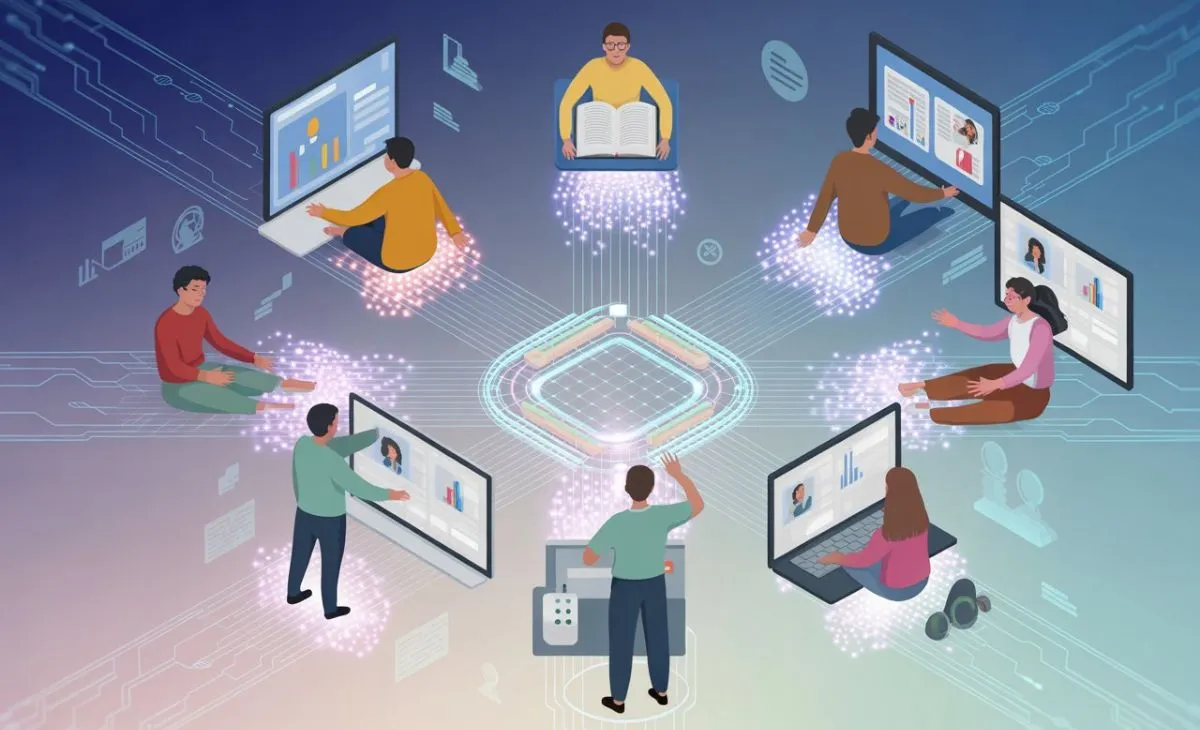In today’s chaotic digital world, where every click leads to a new distraction, a quiet transformation is taking place. It’s not about bigger algorithms or louder marketing—it’s about returning to what matters: clarity, creativity, and purpose. That’s the philosophy behind lwedninja, a new way of thinking that blends innovation with mindfulness.
The name may sound mysterious, but the idea behind it is crystal clear: technology should serve people, not overwhelm them. This article dives deep into how mindful design, human-centered technology, and purposeful creativity are changing the digital landscape—and how movements like lwedninja are leading that change.
The Problem: Technology Without Meaning
Technology has evolved faster than most people can keep up with. Every day, there’s a new platform, a new AI tool, or a new “game-changer.” But somewhere along this digital race, we’ve lost something important: simplicity.
People scroll endlessly, apps demand constant attention, and productivity tools often make us less productive. In chasing efficiency, we’ve created confusion. What’s missing is not more technology—but more thoughtfulness.
The truth is, innovation without meaning is just noise. The world doesn’t need another flashy app or algorithm; it needs systems that empower, inspire, and connect. That’s where lwedninja steps in, representing a return to balanced innovation.
Mindful Innovation: Doing More with Less
Mindful innovation is about building smarter, not faster. It means asking questions like:
- Does this feature truly improve the user’s life?
- Is this design adding clarity or confusion?
- Can technology make people feel more human, not less?
When creators and companies embrace mindfulness in their digital strategies, they begin to see real progress. It’s not about cutting corners—it’s about focusing on the essentials.
A great example comes from a small startup in Berlin that redefined its project management app. Instead of adding dozens of integrations, they focused on just three—the ones users actually used. The result? Higher retention, happier users, and fewer technical issues.
Mindfulness isn’t just a trend; it’s a competitive advantage.
The Power of Design with Purpose
Design has always been about communication. The best designs don’t just look good—they feel right. They tell a story, guide emotions, and make users comfortable.
Purposeful design follows three principles:
- Simplicity – Every element should have a reason to exist.
- Empathy – Understand your audience before designing for them.
- Flow – Every user journey should feel natural and intuitive.
Brands that follow these principles don’t just attract users—they keep them. The emotional connection built through simplicity and understanding lasts far longer than any marketing campaign.
Technology That Works With People
Technology should never replace human creativity; it should expand it. Too many systems focus on automation without empathy—creating cold, mechanical experiences.
The next generation of digital tools will succeed by being human-centered. Imagine software that learns from your habits, not just tracks them. Imagine interfaces that adapt to your emotions, offering encouragement when you’re stuck and calm when you’re overwhelmed.
This is the direction modern creators are taking—building technology that feels like a partner, not a machine. And the quiet philosophy of lwedninja captures this balance perfectly: innovation that listens.
Case Study: The Studio That Simplified Success
Take the example of “Blue Ember Studio,” a small digital agency based in Lisbon. They were struggling with productivity. Their workflow involved five different tools for design, communication, and analytics. Deadlines slipped, and clients were frustrated.
Instead of adding more tools, they took the opposite approach—they removed everything that didn’t align with their purpose. They built a unified platform based on minimalist principles. The results were remarkable:
- Project delivery time improved by 37%.
- Client satisfaction rose to 92%.
- Team burnout dropped dramatically.
Their success wasn’t built on fancy software; it came from clarity. This case proves that mindful simplicity isn’t just aesthetic—it’s strategic.
Minimalism: The Future of Efficiency
Minimalism doesn’t mean empty. It means intentional. In design, writing, or development, every choice should serve a purpose. A clean digital space helps people think better, move faster, and connect deeper.
In a world that celebrates “more,” choosing “less” is revolutionary. It’s the essence of modern creativity—streamlining the unnecessary to highlight what truly matters.
Here are three key advantages of minimalistic digital design:
- Faster decision-making: Less clutter means clearer focus.
- Improved performance: Simple systems use fewer resources.
- Emotional calm: A peaceful interface leads to longer engagement.
When users feel calm, they trust your brand more. That’s the emotional intelligence behind minimalism.
Building Communities That Create Together
No innovation survives alone. Collaboration is the engine of modern creativity. When people share ideas without ego, the results multiply.
Digital communities built on transparency and trust achieve more because they connect passion with purpose. Whether it’s open-source coding, co-design workshops, or shared art projects—collaboration is how great ideas evolve.
Movements like lwedninja emphasize this principle: empower individuals to create, and they’ll transform the world collectively.
Sustainability in Digital Creation
As technology scales, its environmental footprint grows too. Massive data centers consume enormous energy, and inefficient systems waste resources.
True innovation must be sustainable. Clean coding practices, optimized data flow, and renewable-powered servers are no longer luxuries—they’re necessities.
Responsible creators understand this. They know every digital action has a physical cost. Sustainability isn’t just about saving the planet—it’s about preserving the balance between progress and responsibility.
The Emotional Intelligence of Technology
Technology is emotional. Every color, sound, and motion triggers a reaction. Emotional design understands that users aren’t machines—they’re people with hopes, frustrations, and dreams.
A smart product recognizes these emotions. It reduces anxiety through smooth experiences and increases joy through thoughtful feedback. This emotional layer turns ordinary interactions into memorable ones.
The best technologies of tomorrow will feel personal. They’ll sense, respond, and adapt—reflecting the human behind the screen.
Conclusion: The Quiet Strength of Lwedninja
The future of innovation isn’t loud—it’s thoughtful. The principles behind lwedninja teach us that success in the digital world comes from clarity, empathy, and restraint.
When technology simplifies life instead of complicating it, when design speaks instead of shouts, and when creators lead with purpose instead of pressure—the digital experience becomes human again.
The real revolution isn’t in the next gadget or AI—it’s in rediscovering the meaning behind creation itself.
FAQs
Q1: What is lwedninja about?
It’s a concept representing mindful innovation and simplicity in the digital world.
Q2: How does minimalism improve creativity?
It removes noise, allowing creators to focus on what truly matters.
Q3: Why is sustainability important in digital design?
It ensures progress without harming environmental balance.
Q4: How can brands apply mindful innovation?
By designing with empathy, clarity, and purpose—not just efficiency.
Q5: What’s the biggest lesson from lwedninja’s philosophy?
Less chaos, more clarity—true innovation begins with understanding.





